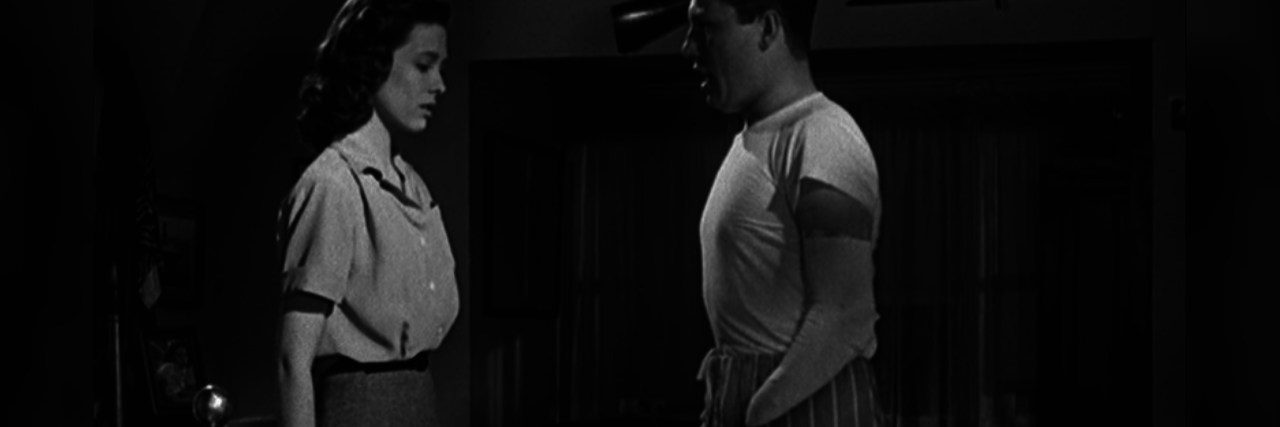You probably have not heard of the film “The Best Years of Our Lives.” Not because it’s some independent, underground flick, but because it came out in 1946. It’s black and white and almost three hours long. Unless you are a film buff, you probably have not seen or heard of it. The film, though, is way ahead of its time and should be known.
The movie follows the experiences of three veterans returning home from World War II. The film depicts their transition back to their old life, how they are treated, post-traumatic stress, the hardships and lack of respect others give them, and how they deal with their problems. That in itself is very unique for a movie about World War II. Most of these issues veterans face were not discussed in films until Vietnam and later wars. That alone puts the film in a class of its own.
One of the veterans in the film returns with prosthetic arms. The film depicts the awkwardness people display around him, accepting himself, children taunting him, and many doubting his ability to do things. I believe this was one of the first portrayals of disability in film. The astounding part is the role is played by a disabled person — a man who actually had prosthetic arms.
Harold Russell played the role and actually had never acted before. He was a real World War II veteran who lost his arms. It would not be far-fetched to conclude that he drew from his own experiences to inspire how he played the role. Russell won the Academy Award for Best Supporting Actor. It took 40 years for another disabled actor to win an Oscar — Marlee Matlin, a Deaf woman, for “Children of a Lesser God.”
Twenty-nine years later, Best Picture winner “The Shape of Water” featured a main character who cannot speak and uses sign language to communicate. However, she was played by Sally Hawkins, who can speak, is not deaf, and did not know sign language prior to filming. I thought it was a good movie and Hawkins played the role fine; I have heard her signs were a little off. It just seems like playing a disabled person is a way for able-bodied performers to prove how good they are at their craft — or at least critics seem to think so.
Some may conclude Russell and Matlin only won because they are disabled and it was more of a showcase of inspiration; I don’t think that’s fair to either of them. After winning the Oscar, Russell only acted again three times, in small roles in the ‘80s and ‘90s. Russel also becomes the first actor to sell his Academy Award. Controversial at the time, he sold it to pay for his wife’s medical bills, a decision that could spark some debate. He also served on the board of the President’s Commission on Employment of the Handicapped, and as National Commander of AMVETS. Marlee Matlin has continued to act and has been nominated for several other awards, as well as being an advocate for the deaf community.
Able-bodied actors and actresses have played disabled roles for years. According to the Ruderman Foundation, 95% of disabled roles are played by non-disabled people. This leaves many disabled performers without work or opportunities. There has been a vocal outcry in recent years to have disabled actors play disabled roles — but in truth, it is not too progressive of an idea. Harold Russell did it in the ’40s and had much success. Marlee Matlin has been acting for years. Peter Dinklage from “Game of Thrones” has won a large number of awards. These performers might be unique cases, but they shouldn’t be.
It has been almost 75 years since “The Best Years of Our Lives” was released. The film industry likes to think it is so progressive, but the lack of disabled actors receiving appropriate roles is actually more of a step back.
Image via Amazon.

